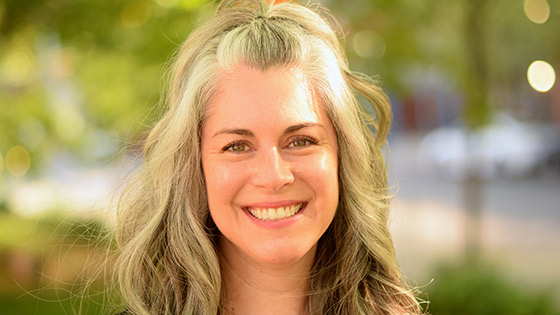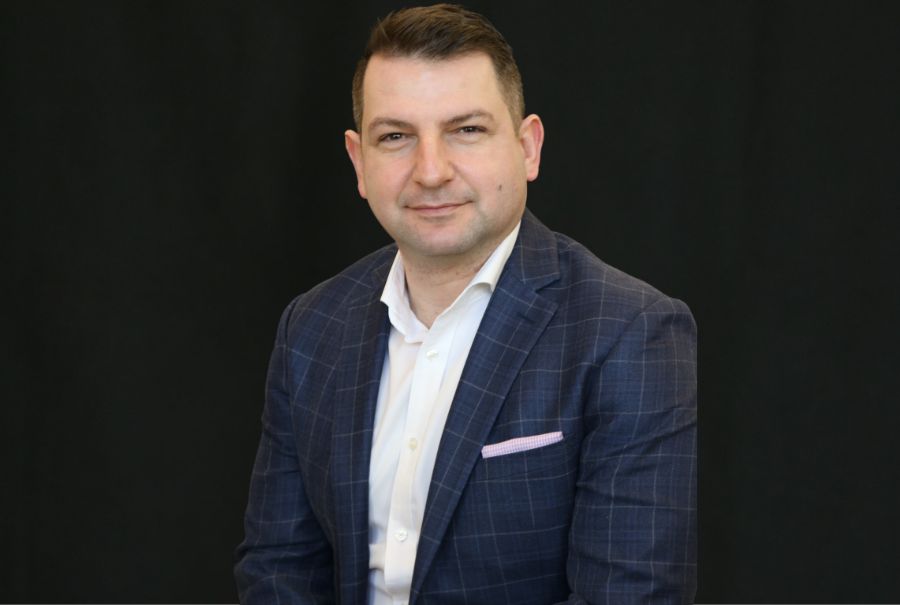“It helps me to look at this situation by the numbers, which indicate a very small chance my child will catch COVID,” says Dr. Alon Vaisman, UHN Infectious Diseases and Infection Control Physician. (Photo: UHN)
This week, many children will be returning to school for the first time in months after last year’s in-school learning was again cut short by COVID-19. While vaccinations have made it dramatically safer and reduce the risks, a number of other questions and concerns remain for parents of school-aged children.
Who better to help answer these questions than two members of University Health Network’s Infection Prevention and Control (IPAC) team, who not only study infectious diseases, but are, first and foremost, parents.
UHN sat down with Dr. Alon Vasiman, Infectious Diseases and Infection Control Physician, and Carly Rebelo, Manager of IPAC, to ask important questions about going back to school.
Q: What helped you make the decision to send your children back to school?
Carly: My son is seven years old and needs to return to learning and socializing in person. This decision is very personal to each household and there is no wrong or right answer. My husband and I went through a series of questions and concerns we had, and we made the decision based off the information we collected from our school and what was going to be best for our son’s development.
Alon: My daughter is two-and-a-half years old and will be starting pre-school this month. When the pandemic began, she was one and we felt these years are fundamental to her socialization, and the benefits of sending to her pre-school outweighed the risk.
Q: How likely is it that a child will be infected with COVID-19?
Alon: In Ontario, pediatric cases account for about one in eight of all cases of COVID-19. If a child catches COVID, the likelihood of requiring hospitalization is about one in 200, and the likelihood of needing admission to an Intensive Care Unit is about one in 1000. In Ontario, and more specifically Toronto, many safety measures have been put in place to help protect children including masking, social distancing, and new air filtration systems in some schools. Thankfully, we have a high vaccination rate among adults and teachers, and with this protective ring we are creating around children, it limits the chance of children acquiring COVID.
Q: How does your son feel about wearing a mask?
Carly: My son is actually very good at maintaining a mask for long periods of time. We have found masks that fit his face well and do not fall below his nose. This is important because if they do not fit properly, they cannot do their job, which puts my son and others at risk. We have a few rules for his mask use, if it gets wet it needs to be changed, he should change into a new mask when he arrives at after-school care and all masks used in a day are laundered before they are used again.

Q: How do you overcome the fear of uncertainty and anxiety with COVID?
Carly: It is difficult to overcome, I admit I am anxious. My husband and I went through questions and concerns and ultimately determined the benefits outweighed the risks. My child needs to be in school and have a strong year of learning and socialization with other children. With that being said, it does not take away the uncertainty and that is completely normal.
Alon: It helps me to look at this situation by the numbers, which indicate a very small chance my child will catch COVID, and an even smaller chance of having a bad outcome. It does not mean all the risks are gone, but I am reassured that there are many people thinking about the safety of children going back to school.
Q: How has the arrival of the vaccine impacted the decision to open schools?
Carly: In Toronto, close to 80 per cent of people above the age of 12 are fully vaccinated, which means the majority of the parents and teachers will be fully vaccinated. This changes the mentality going into school this year and does give me a level of reassurance knowing the majority of kids my son will interact will come from a vaccinated household.
Alon: For starters, everyone over the age of 12 has the opportunity to get the vaccine (unless they cannot because of a medical condition). The vaccines give an excellent level of protection to the vaccinated and create a protective ring around those who cannot be vaccinated. Some school boards are mandating staff to be vaccinated and the City of Toronto has a very high vaccination rate. We are in a much better spot this fall than we were last year in this regard. Although it may feel like we have the same concerns, the risk is lowered as a result of vaccines.
Q: Some parents are concerned about their child developing myocarditis as a result of the vaccine, what would you say to a worried parent?
Alon: This is definitely a conversation I hear from people and I understand the concern. What we know so far is that myocarditis is more common in younger men but remains generally mild and non-life threatening. On the general population level, the risk of getting myocarditis is actually higher when contracting COVID than from the vaccine itself. I would tell them that the risk-benefit ratio favours getting vaccinated for those 12 and older.
Q: What can individual households do to help protect their children and their classmates?
Carly: One of the best things families can do is continue to abide by the reopening measures. Right now, we are in a good place and are able to see friends and family safely. The other important piece is not sending your child to school if they are showing symptoms. Our old mentality was to send our kids to school even with a runny nose, but with COVID this needs to stop. COVID is often very mild in children, with a runny nose being their only symptom. If your child is showing symptoms, keep them home and have them tested. Every household has the obligation to themselves, their child, their classmates and teachers to be responsible.
Alon: The key messages we are familiar with from the start of the pandemic remain just as important today as they were a year ago. Masks, avoiding the public when ill, handwashing, and physical distancing will help limit transmission, and keep everyone safe. Like Carly said, households need to continue to abide by the reopening measures and do their part to keep everyone safe.


